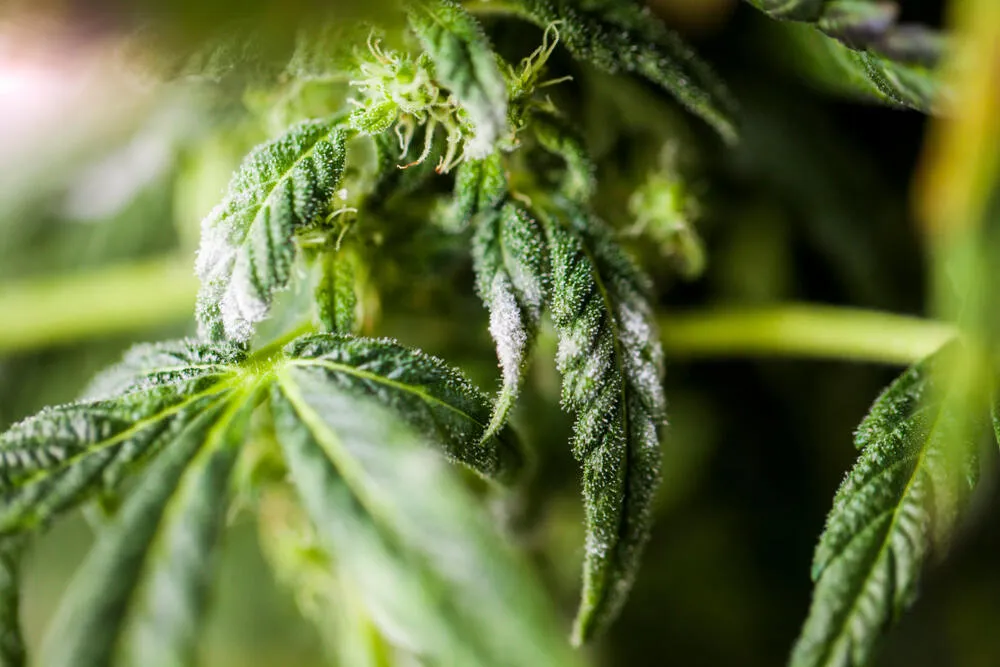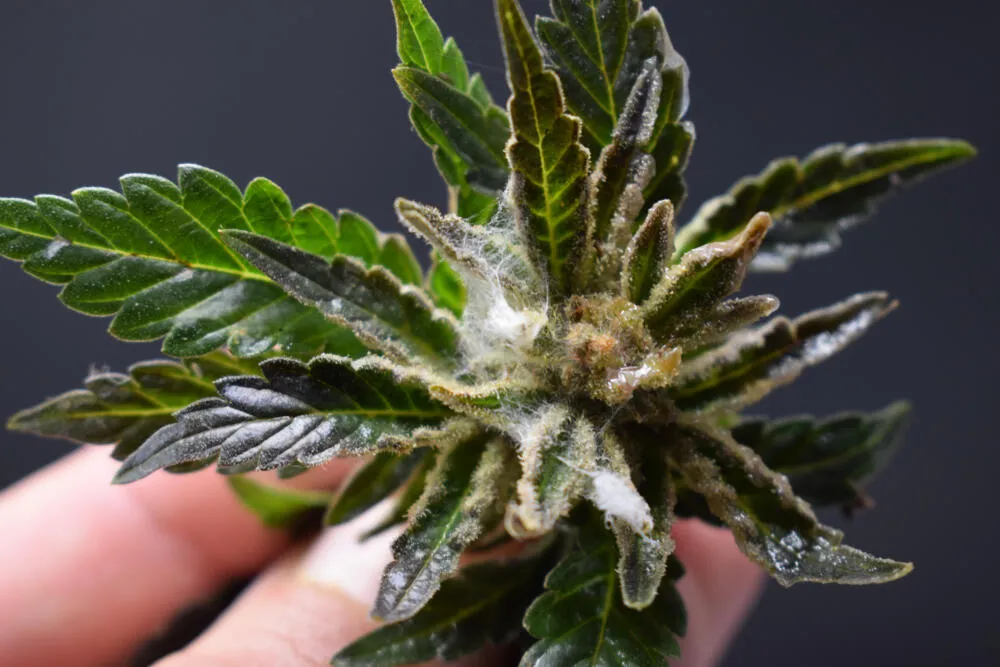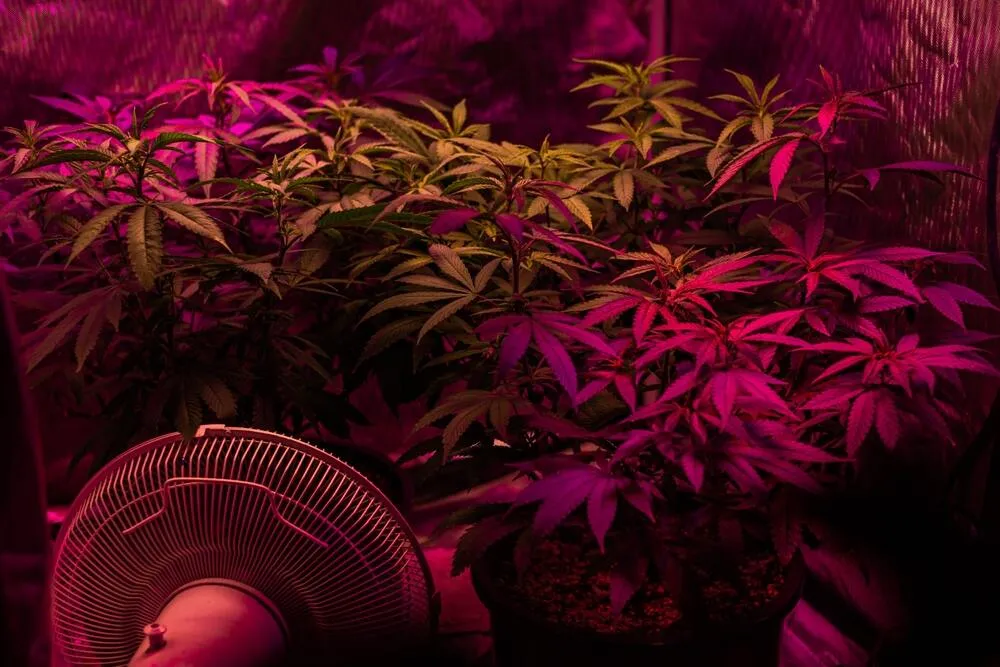Mold. Pretty much the very last thing any weed grower wants to see on their prized plants, but in all honesty, it's close to an inevitability at some point.
Unless you have your growing environment dialed into perfection and really know what you're doing, there is a disgustingly high chance that the dreaded mold will strike at some point during your first few grows.
Don't go into panic mode just yet though. By the time you finish this article, you'll have a much better understanding of mold, how to identify it on your cannabis plants, how to treat it and most importantly, how to prevent it in the first place.
What causes mold on cannabis plants?

More than one hundred thousand different species have been identified so far, all of which belong to the fungal family tree. Mold is one of the true shapeshifters of the fungal world, capable of taking on different forms depending on its environment and food source. These two variables also drive mold growth.
Environmental factors leading to mold
The primary trigger for a mold explosion is excess moisture or dampness in the growing environment.
Mold also loves warm temperatures, with the optimal range being between 70-90°F (21-32°C). High humidity levels above 60% will also create a perfect breeding ground for mold to thrive.
Poor ventilation and lack of airflow can also contribute to mold growth, as stagnant air creates the perfect environment for spores to settle and start to take over.
Mold also prefers the dark, so if your growing space is not receiving adequate light, this could also contribute to its growth.
Types of mold that affect cannabis plants
The are three types of molds that all weed growers should be aware of:
- Botrytis cinerea - bud rot (also called gray mold). The most annoying of all the molds, as it only pops up near the end of all the hard work. It can spread fast and ruin an entire crop in a matter of days.
- Fusarium oxysporum - root rot. A real nightmare, as it's pretty hard to diagnose (unless you are growing hydroponically or aeroponically where it's easy to identify)
- Golovinomyces orontii - powdery mildew. The least dangerous of the three and the easiest to treat, but still a real pain in the butt if not caught early enough.
There's no one single treatment that is effective against all of these types of molds, but hopefully, with the right prevention plan in place, you will never have to deal with them in the first place.
Identifying mold on cannabis plants

Signs of bud rot (botrytis)
- The first thing most growers will notice is the buds themselves starting to look dull, off-color or slightly brown, and start to 'shrivel up' slightly - but this isn't the first actual sign.
- Before the buds start to rot and look dead, small black dots of mold will appear on the infected buds.
- Upon closer inspection, by opening up the affected bud, you will see white fungal growth on the interior of the buds.
Symptoms of powdery mildew
- The lower, older fan leaves are usually the first to be hit by powdery mildew, although it can appear on buds and smaller leaves too.
- Powdery mildew looks like a white, powdery substance that coats the surface of leaves.
- As the disease progresses, leaves curl, turn yellow, dry out, and die.
- Once the mold takes hold, it can spread to new leaf growth, developing buds and other parts of the plant.
Recognizing root rot in cannabis
Root rot is harder to diagnose, especially if you are growing your crop in soil or coco-coir, but some visible signs include:
- Leaves starting to heavily wilt, yellow, and even drop off.
- The plant stops growing and struggles to absorb any nutrients or water from the root zone.
- If you carefully dig away some of the soil and expose the roots, you'll be met with a disgusting stank and a slimy mess.
How to treat mold on cannabis plants

I mentioned above that there's no one-size-fits-all solution for treating mold on weed plants, and that prevention is key (more on this further down).
Each type of mold requires its own specific treatment, and using the wrong one could make it worse.
Treatment options for bud rot
- If you're sure it's botrytis, then the first thing you need to do is remove all visibly infected parts of the plant. As heartbreaking as it definitely will be to cut away those flowers you've slaved over for weeks, it's a necessary sacrifice to save the rest of your crop.
- Once you have removed all infected buds and leaves, be sure to get them well away from your plants and growing area. The further, the better.
- Next, you need to clean and disinfect your entire grow space thoroughly. This includes any tools, pots, trays, or equipment that may have come into contact with the infected plant.
- You can also use an organic fungicide like Neem oil and mix it up with water according to the instructions. Neem oil is a natural fungicide that is safe for plants and humans. Spray this liberally on the affected leaves and buds.
- Get some fans circulating air around the growing space, to ensure good airflow and ventilation. This will help prevent mold from taking hold in the future.
Remedies for powdery mildew
- The first step is to prune away all heavily infected leaves. Do not compost these leaves or put them in your compost, as the spores will continue to spread and infect other plants.
- Again, Neem Oil is your friend here. Mix it up with water and spray the affected areas thoroughly.
- Clean the grow area and equipment thoroughly with a bleach solution to kill any remaining spores.
- Make sure to keep humidity levels low, as this will help prevent further growth of powdery mildew.
Managing root rot
Root rot is a real pain to deal with, as you can't simply cut away the infected parts and hope for the best. Once root rot has set in, it's almost impossible to save the plant.
What you can do is take some cutting from the healthiest parts of the plant and start fresh with a new crop.
Preventing mold on cannabis plants

They say defense is the best form of offense, and that couldn't be truer when it comes to preventing mold on weed plants. Active prevention is absolutely key in keeping your plants healthy and thriving.
Humidity control
As mentioned earlier, high humidity levels above 60% create the perfect conditions for mold growth. Sure, seedlings like a higher humidity (around 70%), but as the plant matures, you should aim to keep the humidity at 55% or less.
Indoor growers can look at investing in a dehumidifier if they have issues with excessively high humidity levels. Outdoor growers are at the mercy of the weather, but there are still things you can do to help keep humidity under control.
Proper airflow and ventilation
Proper airflow is vital and often overlooked by newer growers.
There are two main types of airflow in the growth space: air circulation within the room and through the canopy and air exchange in and out of the room. We always want air moving through the canopy and in and out of the room—this helps prevent mold by not allowing stagnant air to sit on the plants.
Oscillating fans are great for canopy air flow but do little to help with air exchange in the room. If you're growing indoors, make sure to have an exhaust fan that's constantly exchanging stale air for fresh.
Environmental controls for mold prevention
No one wants a meal cooked in a filthy kitchen, and no one wants buds grown in an unclean environment. Make it a habit to regularly clean and disinfect your growth area, especially between grows.
The same goes for your tools and yourself. Wash your hands and the tools you use before working with your plants and do so every single time you enter the grow space. This is even more important for tools like scissors and pruners, as they are used to cut the plant.
Preventing root rot
Again, root rot is harder to prevent because it's usually caused by external factors like overwatering or poor drainage.
Make sure to water your plants only when the soil is dry and provide proper drainage for excess water. You can also add beneficial microbes to the soil, which can help prevent root rot.
Cannabis mold FAQs
How do I prevent mold on cannabis buds?
Prevention is key. Keep the humidity levels in check, clean and disinfect your grow area regularly, promote proper airflow, and be mindful of watering and drainage practices.
Can I save cannabis plants that have mold?
That depends on the type of mold. Plants affected by bud rot or powdery mildew can potentially be saved (depending on how widespread the mold is), but plants with root rot are usually beyond repair.
What are the risks of smoking moldy cannabis?
While the health risks relating to smoking moldy weed are quite minimal, it can cause lung irritation and other respiratory issues. The biggest issue is that moldy buds can contain mycotoxins, which are harmful toxins produced by some types of molds.
Just don't smoke moldy weed - it sucks.










